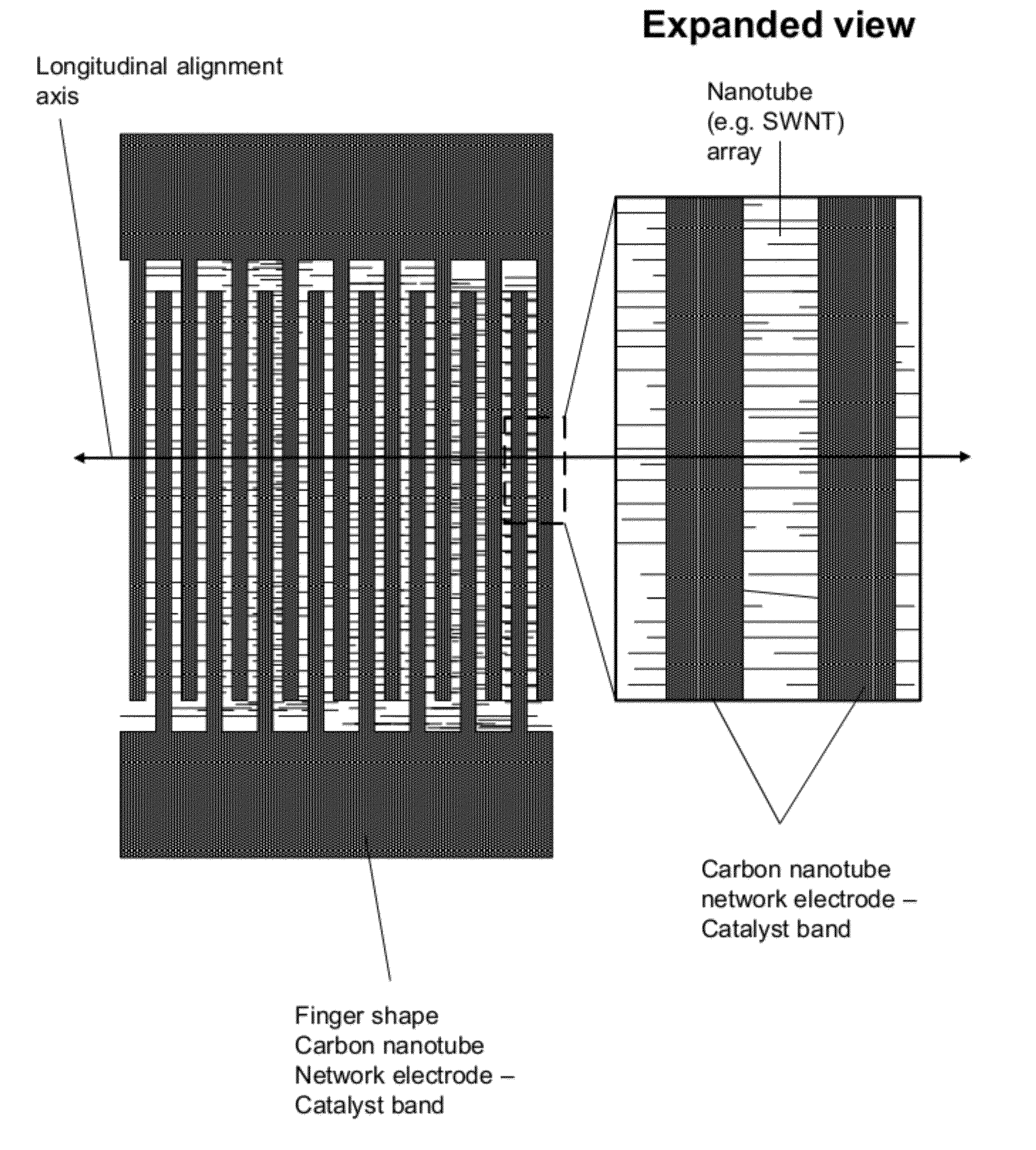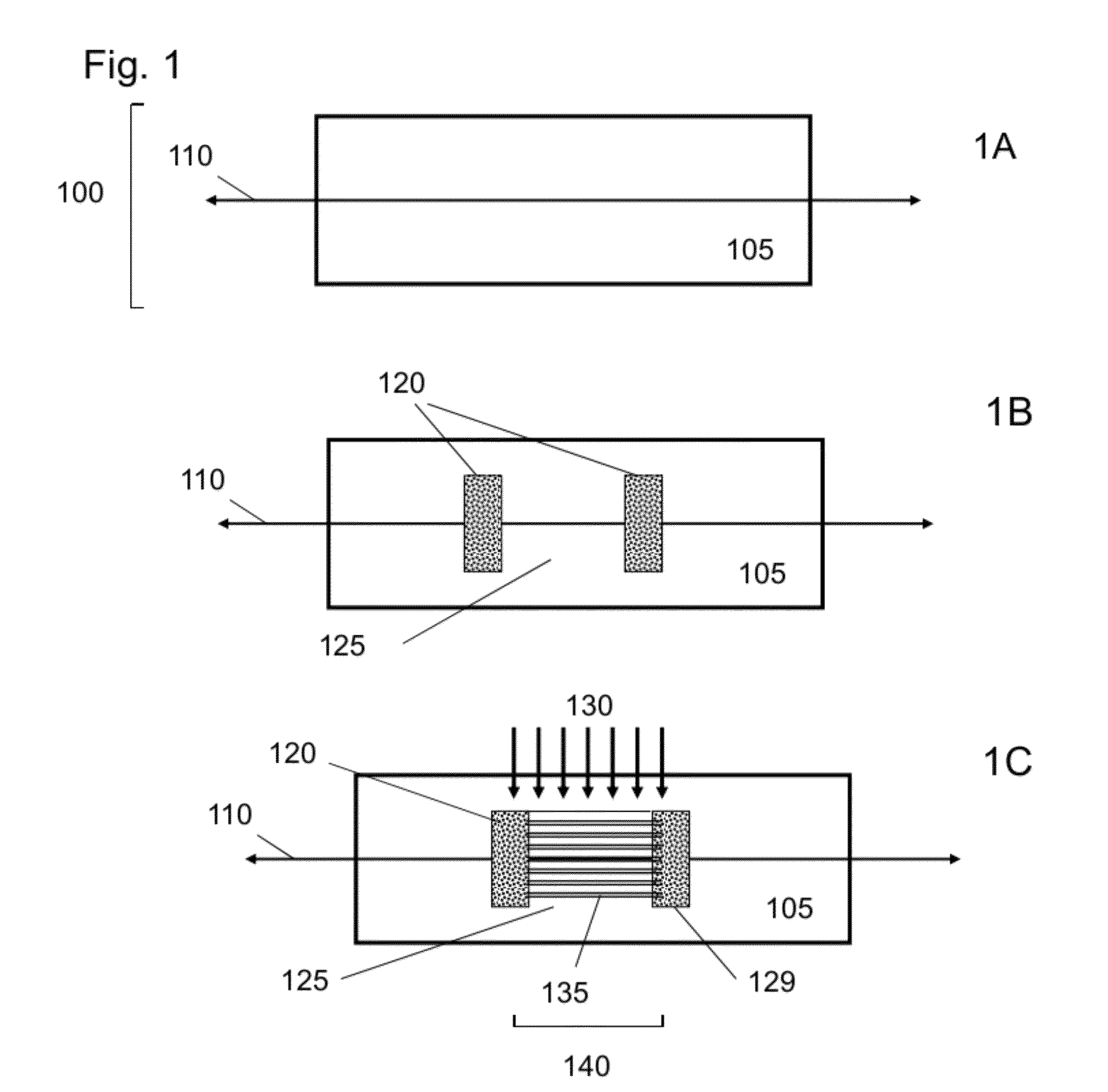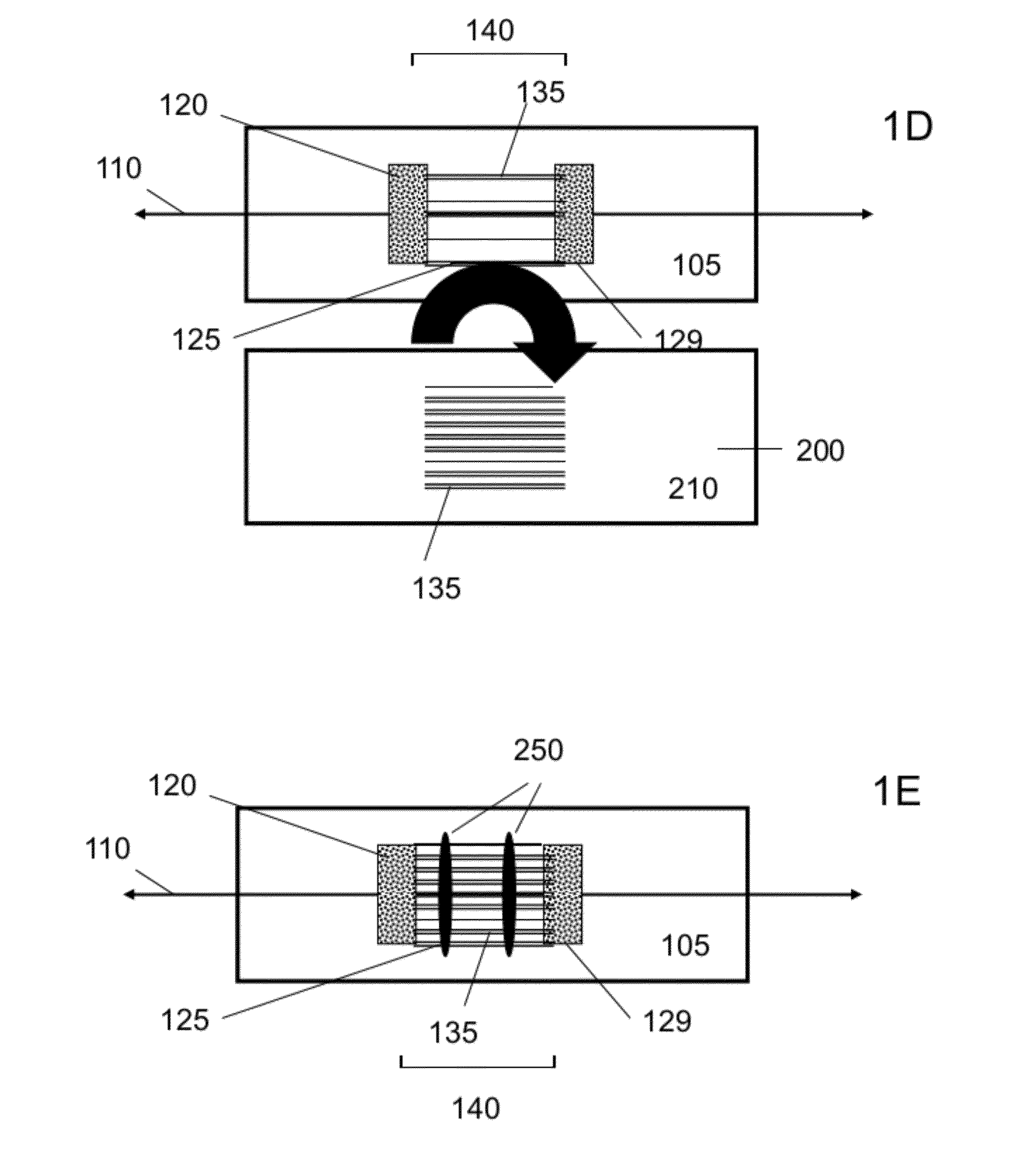Methods of Making Spatially Aligned Nanotubes and Nanotube Arrays
a technology of nanotubes and arrays, applied in the field of carbon nanotube materials, can solve the problems of limiting charge transport, limiting the mobilities of devices achieved with these networks, and the properties of transistors that use solution-deposited tubes are typically inferior to those of transistors, so as to achieve good electronic behavior (and/or optical properties), good placement accuracy, and high fidelity
- Summary
- Abstract
- Description
- Claims
- Application Information
AI Technical Summary
Benefits of technology
Problems solved by technology
Method used
Image
Examples
example 1
Spatially Selective Guided Growth of High Coverage Arrays of Single Walled Carbon Nanotubes and their Integration into Electronic Devices
[0122]Thin films of single-walled carbon nanotubes (SWNTs) can provide semiconducting and / or conducting components of passive and active (e.g. transistors) electronic devices. Potential applications range from large area, mechanically flexible systems, where semiconducting SWNT films could provide advantages over conventional small molecule or polymer semiconductors, to high performance devices, where they could provide alternatives to large grained polysilicon or even single crystal silicon. For the former class of application, random networks of SWNT might offer sufficient performance. For the latter, densely packed aligned arrays of SWNT are preferred. Forming such arrays, patterning their coverage and, possibly, interfacing them with SWNT networks represent significant experimental challenges. Modest degrees of alignment and coverage can be ach...
example 2
Guided Growth of Large-Scale, Horizontally Aligned Arrays of Single-Walled Carbon Nanotubes and their Use in Thin-Film Transistors
1. Introduction
[0135]In this example we describe use of large-scale arrays of longitudinally aligned carbon nanotubes as effective semiconductor “thin films” for TFTs. The effective device mobilities (up to 125 cm2V-1 s-1) are substantially higher than those that we have been able to achieve in random networks of SWNTs grown using similar techniques (≈50 cm2V-1 s-1). The results presented here indicate that low-cost quartz substrates can be used to generate high-quality aligned arrays of SWNTs for a range of applications in electronics and sensing.
2. Results and Discussion
[0136]FIG. 9 provides AFM images of random panel (a) and aligned panel (b) SWNTs grown on SiO2 and single-crystal quartz, respectively. Histograms are also presented in FIG. 9 of the orientation, panel (c), and diameter, panel (d), of the aligned SWNTs. These data suggest that most of th...
example 3
Transfer of Arrays of Longitudinally Aligned Nanotubes Grown on Guided Growth Substrates to Device Substrates
[0148]The present invention provides printable arrays of longitudinally aligned nanotubes fabricated on a guided growth substrate patterned with catalyst that are capable of subsequent transfer to a device substrate, such as a flexible polymer substrate or a substrate prepatterned with device components (e.g. electrodes, insulators, semiconductors etc.). Printable nanotube arrays of the present invention are capable of efficient transfer (e.g. at least 90% of the nanotubes are transferred) and are capable of transfer in a manner that preserves the relative orientations and positions of nanotubes in the array.
[0149]FIG. 17 shows a process flow diagram illustrating an exemplary method of the present invention for transferring one or more arrays of longitudinally aligned nanotubes from a guided grow substrate and assembling the transferred nanotubes into a functional device on a...
PUM
| Property | Measurement | Unit |
|---|---|---|
| cut angle | aaaaa | aaaaa |
| length | aaaaa | aaaaa |
| diameters | aaaaa | aaaaa |
Abstract
Description
Claims
Application Information
 Login to View More
Login to View More - R&D
- Intellectual Property
- Life Sciences
- Materials
- Tech Scout
- Unparalleled Data Quality
- Higher Quality Content
- 60% Fewer Hallucinations
Browse by: Latest US Patents, China's latest patents, Technical Efficacy Thesaurus, Application Domain, Technology Topic, Popular Technical Reports.
© 2025 PatSnap. All rights reserved.Legal|Privacy policy|Modern Slavery Act Transparency Statement|Sitemap|About US| Contact US: help@patsnap.com



